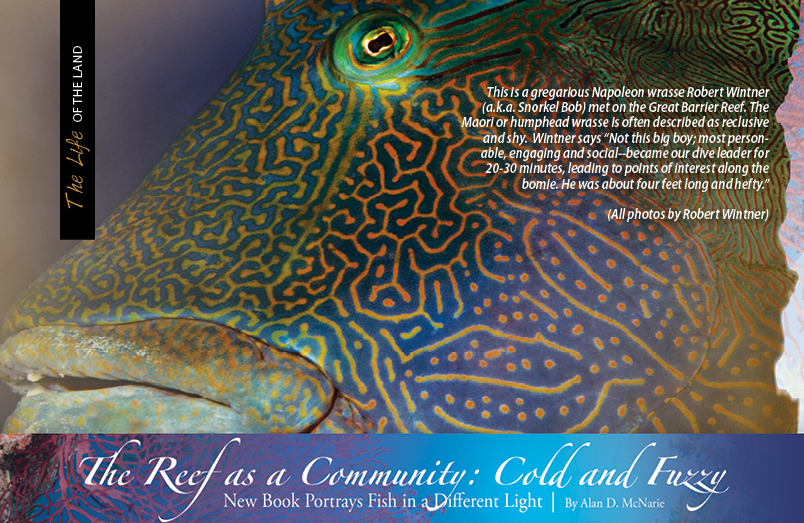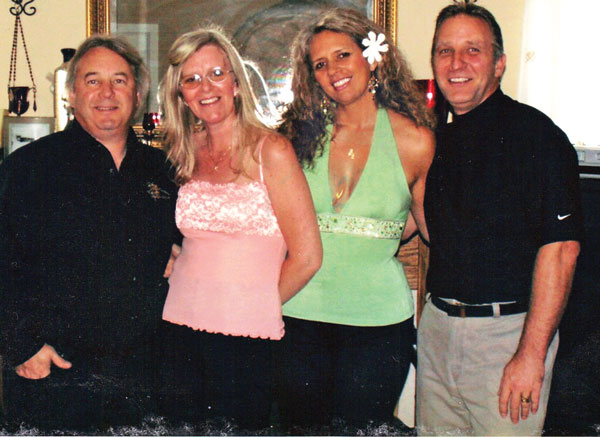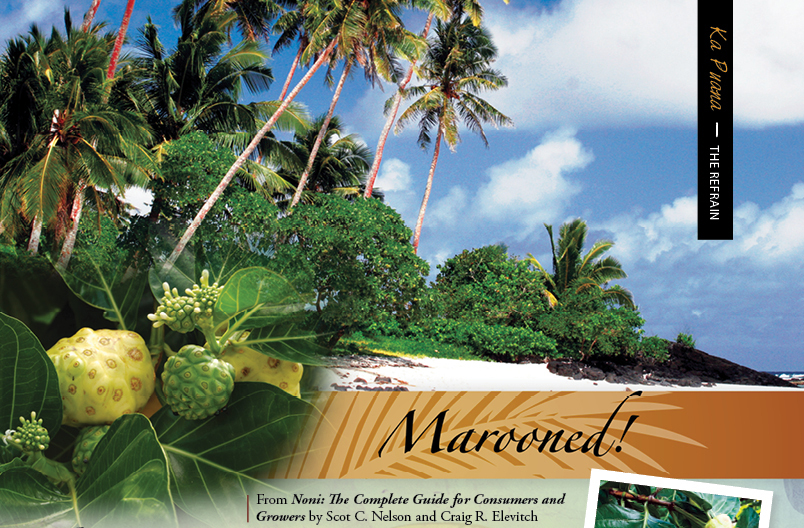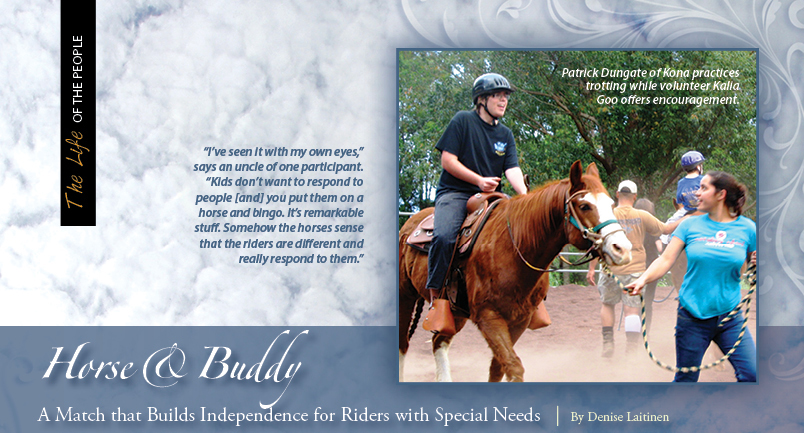
The Reef as a Community: Cold and Fuzzy
New Book Portrays Fish in a Different Light

By Alan D. McNarie
One day in 1955, young Robert Wintner’s father took him to a Miami, Florida drugstore and bought him a two-dollar mask and snorkel—“the deluxe, with the ping-pong ball”—then took him to the ocean. He poked his face in the water and saw a sand crab wave a claw at him.
Little Bobby was hooked. Fifty-five years later, he still describes himself as a “waterlogged, gill-breathing reef addict.”
Most Hawai’i residents probably know Wintner as “Snorkel Bob,” the purveyor of ocean recreation gear and author of outrageous tourist ads featuring snorkeling and surfing pets. But he’s also the author of several novels, including Horndog Blue, In a Sweet Magnolia Time, Whirlaway and Toucan Whisper, Toucan Sing. And he’s long been an environmental activist; he’s sailed on the Sea Shepherd Society’s crusades against Japanese whalers, had a major hand in the push for the Papahānaumokuākea National Monument in the Northwest Hawaiian Islands, and advocated tirelessly for protection of reefs against threats such as aquarium fish collecting.
His latest project, a 200-page book called Some Fishes I Have Known: a Reef Rescue Odyssey (Skyhorse Press), combines all of these talents and reveals yet another side of this renaissance fish-man: he’s also one of the islands’ best underwater photographers.
“I suffered, like a lot of guys do, from shrinking camera syndrome, so I kept getting better equipment,” he muses. “I never anticipated getting the shots that I’m getting now.”
Some Fishes I Have Known is literally a book unlike any other: part reef guide, part coffee-table book, part satire of reef guides and coffee-table books, and part environmental crusade. Most nature books tend to adopt a semi-reverential attitude toward their subject; this one starts out with that joke about the last thing that goes through a gnat’s mind as it hits a windshield (euphemized answer: its derriere.) But behind Wintner’s irreverent façade is a deadly-serious message: Hawai’i’s reefs are under siege, and there’s more to lose than you might think. And there’s nothing silly about the photographs, which are breathtakingly (no pun intended) spectacular.
What makes many of these pictures so unique is the same premise that Wintner says many people miss when they talk about coral reefs. Reef fish aren’t just swimming ornaments: they’re personalities: living creatures with brains and individual foibles, capable of a wide range of interactions with other creatures, including bonding. Wintner calls them “cold and fuzzy.”
He recalls one stop on his recent mainland promotional tour for the book: a Buddhist-oriented radio station.
“They told me that I was the main topic of their dharma class,” he recalls. “They wanted to pose the question that their class had processed all week: ‘Do fish have souls?’”
Wintner thought a moment before answering.
“It’s an anthropogenic question. It assumes that all humans have souls… I told them I don’t like the question. I’d like to rephrase it. Can a fish be a friend of mine? And the answer is, ‘Yeah, just look at these pictures….’”
That assumption—that fish can be friends, or at least can develop relationships with people—is one thing that makes these pictures different. Most fish guides picture fish in profile—sometimes laid out on a slab, dead—so they’re easy to identify. But in Wintner’s photos, marine animals are doing things: mating, stalking, schooling, guarding their territories, cleaning each other, or looking right at the camera, checking out the photographer as he checks them out.
“If a fish continues a personal behavior like feeding without being concerned by your presence, that’s a sign of trust,” Wintner believes.
“You go out there without a spear, without a hook, and things change. Things are different,” he says; if you don’t automatically assume the role of a predator, the marine community may start auditioning you for other roles. He’s faced off sharks, schooled with mahimahi, played hunting partner with a giant moray and even been tapped on the back by an apparently amorous honu. (Maybe from a turtle’s perspective, those dive tanks look like a shell?)
Wintner really does have longstanding, personal relationships with some fish—a huge yellow margin moray, for instance, whom Wintner has named “Kukla” after an old children’s TV show character. Kukla, who’s about six or seven feet long and a foot in diameter, hangs out near a submerged rock in the Molokini marine sanctuary off Maui.
“He’s come out and free swam with me several times,” Wintner says. “He gets between me and my buddy like we’re a trio.”
When a big predator swims shoulder-to-shoulder with you, notes Wintner, that may be an invitation to hunt together, as morays and ulua often do.
He recalls a similar incident when he was part of a Sea Shepherd crew in the Caribbean. The ship’s captain, Paul Watson (who later became famous as the hero of the Discovery Channel reality series, Whale Wars), had stopped the ship to pluck a derelict oil drum out of the water, and allowed the crew to take a swim break. But there were already swimmers in the water: five mahimahi were “hanging out under the drum.”
After a few minutes, Wintner recalls, “They started integrating with the swimmers. This big bull came up, and again, it was shoulder to shoulder, and I think it was trying to team up…. “
Halfway around the globe, near Australia’s Great Barrier Reef, he made another acquaintance: this time, a Maori wrasse.
“The guy came up to me. We literally went nose to nose, and then he went sideways, so I got a [camera] shot…. He’s described in the fish books as shy and reclusive and unengaging. But he literally became our dive leader. He led us to points of interest, to nooks and crannies, to interesting scenes and coral formations. He stayed with us for probably 20 minutes, with body language exactly like another diver. He was part of our group….”
That’s another thing he doesn’t like about many fish guidebooks: they rarely talk about fish behavior, and if they do, he says, they tend to speak of an entire species as if its members all act the same way.
“That’s like humans are aggressive or humans are shy and that’s not the case,” he says. “It’s not the species, it’s the individual.”
Not that people can’t make some generalizations. With sharks, for instance, it’s generally a good idea to show some aggression yourself.
“With a shark, it’s all body language,” he says. “If you have the wherewithal to move aggressively, you have a better chance of surviving the encounter. There was a guy years ago. He was the very first guy to get out of a cage with great white sharks. He noticed that people would cower and then the sharks would attack the cage. So he got out of there, and he kept moving forward, and the sharks left him alone.”
It’s that collection of individuals interacting—both human and animal individuals—that makes the reef a “reef community.”
The reef’s complex web of interdependent relationships can’t be duplicated in an aquarium. Some fish, such as parrotfish and butterfly fish, eat coral, creating the white sand where other fish, such as flounders, garden eels, and beach crabs, live. Others, such as tangs and surgeons, eat algae, which would otherwise smother the coral heads. Still others, such as cleaner wrasse and cleaner shrimp, eat the parasites off other reef denizens; others are hunters, keeping populations in check.
Which is why Wintner unabashedly hates the marine aquarium trade. Yellow tangs, which make up about 60 percent of the aquarium trade, are algae grazers who can live 40 years in the wild, he notes. Removed from their support network on the reef, however, “Ninety-nine percent of all yellow tangs sold into aquarium slavery die within a year, many in transit.” Other fish have even lower survival rates: “Hawaiian cleaner wrasses die quickly without other fish to clean. Ornate butterflyfish and other butterflies starve (to death) in 30 days without live coral to graze, but they ship out daily with a 15-day live guarantee.” Meanwhile, back at the reef, algae goes uneaten, sand goes unmade, and parasites go uncleaned. The reef community unravels a little further, like a rundown urban neighborhood.
Wintner has watched while formerly abundant species such as blueline butterflies virtually disappeared from many reefs. Beneath irreverent Snorkel Bob wisecracks in Some Fish I Have Known lies a hard undertow of anger and grief: “At Puako on the North Kona Coast, blueline butterflies are down 98 percent, while at Honaunau farther south (Pu‘uhonua O Honaunau) they’re gone—finito, caput, no mo stay, or as the DAR [State Division of Aquatic Resources] put it, “experiencing a 100-percent decline.”
Wintner is already nearly finished with a sequel, entitled Every Fish Tells a Story, due out in May with 400 new photos.
“I think it really hones in on the reef community as it symbolizes the world community,” he says. The new book expands its geographic focus, featuring new pictures from Australia and St. Croix.
But the message, while expanded, remains the same at its core.
“People use this phrase, ‘reef community,’ without thinking about it,” he says. “Well, think it over.”
Update on Aquarium Fish Gathering
Commercial aquarium gathering continues to go on in Hawai‘I, but at least for some fish, the practice just got slightly more humane. On Friday, January 21, 2011, the Maui County Council passed a resolution banning some practices of the aquarium fishery as inhumane.
Those practices including “finning” (trimming a live fish’s fins, usually with a scissors, so they can’t puncture plastic shipping bags) “fizzing” (puncturing swim bladders to relieve internal pressure, so fish can be brought up from deep water faster) and starving fish prior to shipment in order to reduce feces in transport bags.
But the county ordnance only affects fish in waters off Maui, Molokai and Lanai. As Division of Aquatic Resources scientist Dr. Bill Walsh points out, the majority of the aquarium fish industry is based on the Kona Coast.
The Division of Aquatic Resources has proposed its own reforms of rules governing the industry, including a new “Fish Replenishment Zone” along 1,500 feet of shoreline at Ka‘ohe (a.k.a. Pebble Beach). Additional new rules would put limitations on numbers of species of fish and place some size restrictions on yellow tangs, which make up the majority of fish caught in the industry here. Those rules have gone to the Attorney General’s office for approval—where they’ve now sat for over a year.
For many local residents, however, those rules don’t go far enough. Kona State Sen. Josh Green and Maui State Sen. Shan Tsutsui introduced bills last year to ban the aquarium fishery altogether. Those bills were held up in committee, but Wintner and other activists have vowed to keep pushing for them.


